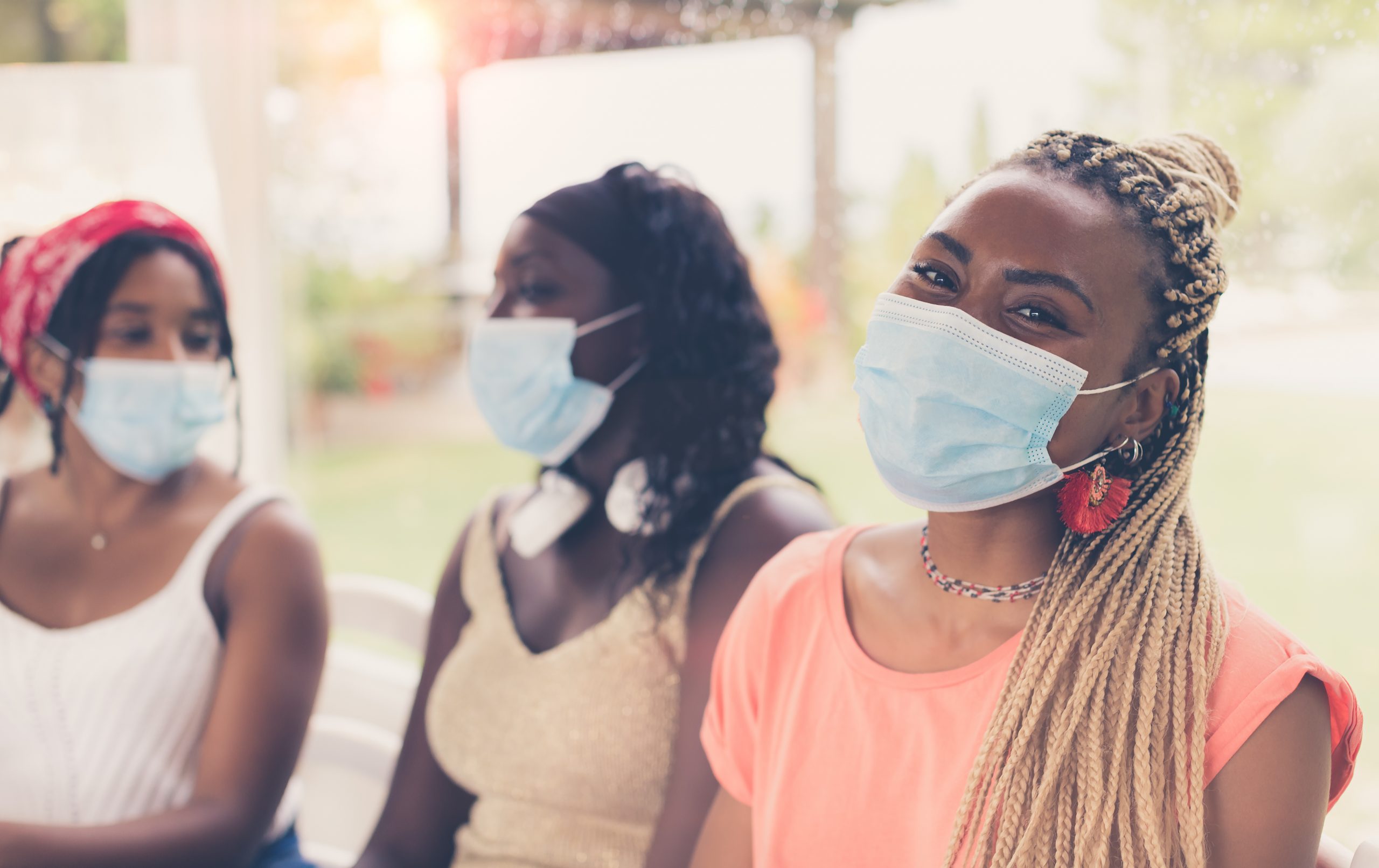Five ways to communicate effectively when wearing a face mask and socially distancing

Professor Gwyneth Doherty-Sneddon is Head of the School of Psychology at Newcastle University and a body language expert. Gwyneth has partnered with Scape, student accommodation specialists in the UK and Australia, to offer her five top tips on how to communicate effectively when wearing a face mask and socially distancing.
Listen up!
Lip reading is an important part of our understanding and hearing of one another. We know that if lip movements are not synched to the sound they make, for instance, when you are watching a badly dubbed film or an out of synch Zoom call, you can start to mishear sounds. Whilst we naturally tend to rely on watching people’s mouths move to hear what they are saying, we can easily combat misunderstanding by taking the time to listen properly to what others are saying.
If you miss something, don’t be afraid to politely ask the speaker to repeat themselves, and stand in front facing towards them to show that you are engaged in the conversation. Similarly, if you are the one speaking, speak much more slowly and clearly – no need to shout but add tone and expression to your speech to make it easier to understand.
Express yourself
Mouths feel like the easiest part of our body to control as we constantly use our mouth muscles to eat, speak, smile and frown. Whilst it may seem easier to use and rely on the mouth to express our feelings to others for these reasons, there are many gestures we can adopt to positively engage with others. For instance, hand gestures and gentle, attentive movements can play an integral part in developing our relationships with others and communicating effectively.
People that motion with their hands and gesture when they speak are often liked more by others as it often helps others understand what we are trying to communicate. Another way to connect with others in a non-verbal way is by mirroring the body language of others. By adopting similar expressions and postures to those around us we can build important rapport.
Eyes are the window to the soul
The eyes give incredibly good reads of emotion, but people tend not to be as aware of that because they are so used to concentrating on the mouth region. When wearing a mask make the most of using eye signals and showing you are engaged by using your eyes to express emotion; for example, raising your eyebrows, opening or squinting your eyes to show reaction to what others are saying.
Lots of facial emblems are based around the eyes – a look of the eye can show you’re flirting, angry, in disbelief, etc. It might be quite good for students to almost practice their signals and facial expressions when wearing a mask, even in the privacy of their own room. Or maybe establish little gestures or eye movements within a friendship group.
Social interaction is a balancing act
All of our social interactions are a balancing act of the physical cues we communicate and provide to others. If we violate any in each situation, for example by standing too close or too far from someone or talking too much or too little, the interaction can become awkward. Based on the restrictions we currently face in the pandemic, we should try to boost some of the ones we are able to offer to keep the balance, instead of focusing on what physical cues we lack due to social distancing and wearing a face mask.
For instance, not being able to show expression using your mouth, should be combatted by using your hands to wave or your head to nod at passers-by instead of giving a smile. If we cannot stand close to someone due to social distancing guidelines, make sure you turn and lean towards them instead to show you are still engaged with them, even though you are socially distanced.
Remain positive
It may feel restricting to have to wear face masks and socially distance from others; however, I’d encourage students to start seeing these communication barriers as opportunities to get more involved and embrace the new.
Whilst it can feel off-putting being unable to see people’s faces or to have to be stood far apart when you’re at university or in your student accommodation, the situation can be changed by offering acts of kindness to those to make the environment feel less hostile. Why not turn to the person you are stood away from and ask how their day is going, this will easily make up for not standing near them or giving them a smile when they enter the common space.
The same goes for virtual lectures. Instead of turning your camera off and not engaging with others, make an effort to respond and engage with them. Asking questions where you can. If you think about it, large lecture halls are far more daunting spaces to acknowledge others and put your hand up to share thoughts and questions. The virtual lecture means you get to see people’s faces more than you would do when you’re turned towards a lecturer, so make the most of this new opportunity and use it to get to know the fellow students on your course.
